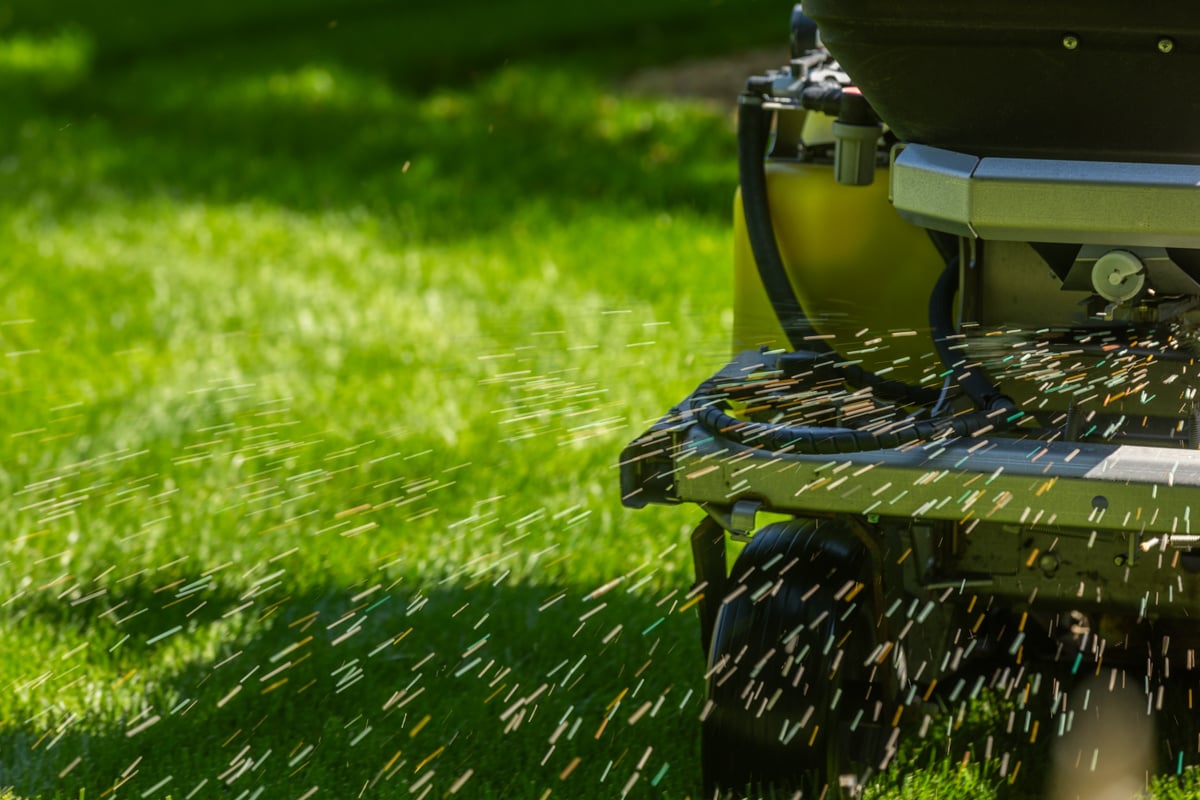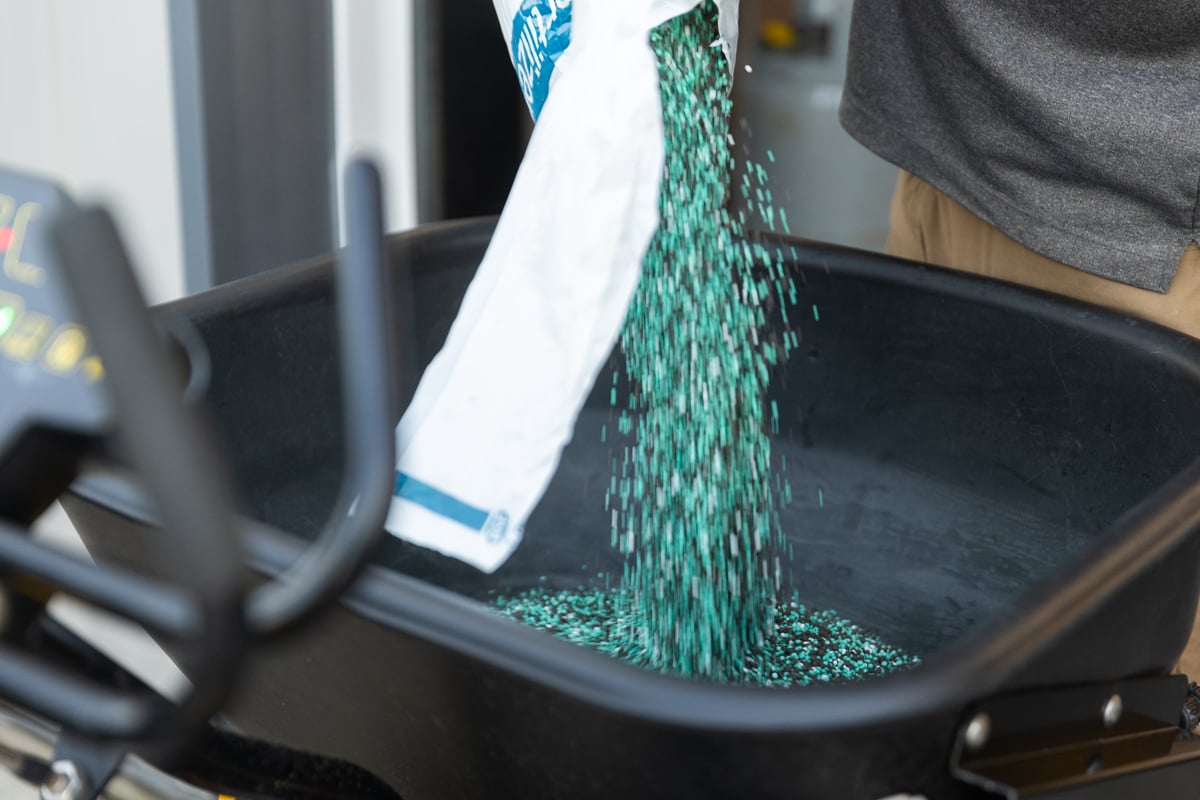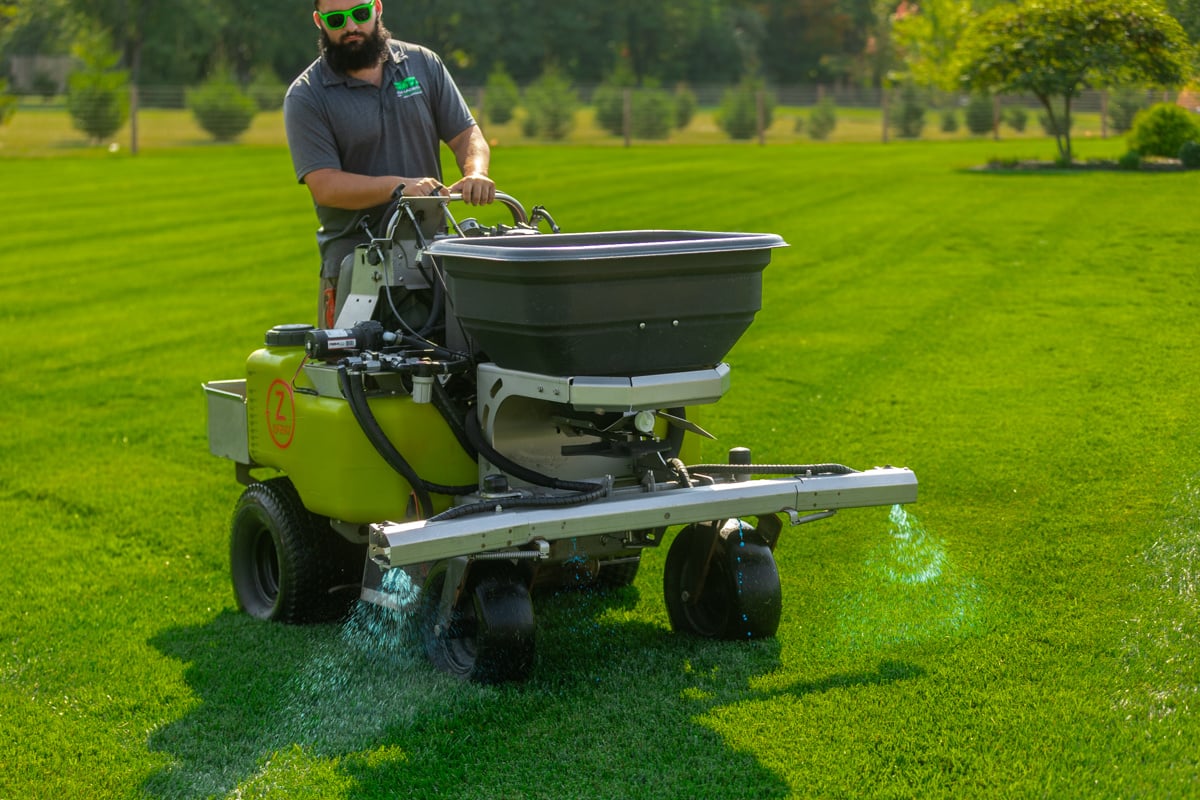



You’re standing in the aisle of your local hardware store, squinting at bag after bag of fertilizer. 12-12-12, 32-0–4, 25-1-7 – it starts to feel like you need a chemistry degree to green up your lawn.
So, what do the numbers on lawn fertilizer mean? They’re the NPK ratio, short for nitrogen, phosphorus, and potassium. Think of it like the nutritional label for your grass. And understanding them can make a huge difference in how your yard looks and how much time and money you spend on it.
Let’s break down what those numbers really mean, how much of each nutrient your lawn needs, and why application rates matter just as much as ratios. It’s time to decode those fertilizer bags together!
You know those numbers on every fertilizer product – like 16-4-8 or 12-12-12 – that look like a lock combination? Well, it’s not exactly a secret code, but using the lawn fertilizer numbers correctly on your turf can be the key to a happy, healthy lawn.
Those numbers represent the NPK ratio, and they stand for Nitrogen (N), Phosphorus (P), and Potassium (K), which are the three major nutrients your grass needs. Here’s a quick breakdown on what they do for your turf:
The green machine. It’s what makes your lawn look lush and vibrant. If your grass looks pale or sad, it probably needs more nitrogen. Nitrogen feeds leafy growth, so it is the MVP when it comes to a thick, rich, green grass.
All about the roots. It’s the behind-the-scenes hero that helps your grass build a strong foundation, especially when it is just starting out or recovering from damage.
The lawn’s immune system booster. It helps to build strong stems and gives your turf the stamina to handle stress, disease, and drought.
Now that we’ve answered “what does NPK stand for?”, let’s explore more about the fertilizer numbers for lawn. They are not randomly placed on each bag. They show the percentage by weight of each nutrient included in the bag. So, for example, a bag labeled 16-4-8 means, by weight, it has:
 You will always find the nutrients listed in that order, no matter which brand of fertilizer you purchase. It is important to remember that not all nitrogen is created equal. Some fertilizers have quick-release nitrogen, which gives your lawn an instant green up, while others have slow-release nitrogen, which feeds your grass like a steady drip of coffee all day long, which helps to keep things green and growing over time.
You will always find the nutrients listed in that order, no matter which brand of fertilizer you purchase. It is important to remember that not all nitrogen is created equal. Some fertilizers have quick-release nitrogen, which gives your lawn an instant green up, while others have slow-release nitrogen, which feeds your grass like a steady drip of coffee all day long, which helps to keep things green and growing over time.
One more pro tip: avoid those all-purpose 12-12-12 fertilizers for lawn. Your grass doesn’t need everything in equal parts. Lawns typically need way more nitrogen than anything else.
Next time you’re standing in the lawn aisle trying to decode the fertilizer shelf, just remember: N is for green, P is for roots, and K is for strength.
So, time for the million-dollar question: how much of this stuff should you be putting on your lawn? If you are staring at the bag, wondering if more is better, the answer is no, absolutely not. Your grass is hungry, but too much fertilizer can do more harm than good.
All lawns need some fertilizer, especially nitrogen (the “N” or first digit in your lawn fertilizer numbers). Nitrogen is the lifeblood of color, density, and overall lawn appearance. But how much depends on a bunch of factors like:
For cool-season grasses, which are most common here in Indiana, most lawns need somewhere between 1 to 5 pounds of actual nitrogen per 1,000 square feet per year. Yes, this is a wide range, but for the lawns most homeowners want it comes out to about an average of 3 pounds per 1,000 square feet. At Shades of Green, we typically apply around 4 pounds per 1,000 square feet per year.
But the lawn fertilizer ratio on the bag also makes a big difference. The NPK ratio tells you what’s in your fertilizer, so you can calculate how much actual nitrogen you are putting down.
If you are going for a quick-green up and using quick-release nitrogen, be careful not to overdo it. But if you are working with a slow-release product, you’ve got a little more wiggle room to put down a higher rate more safely and let it feed your lawn over time.
Remember, how much fertilizer you apply doesn’t just affect how green your lawn gets – it also affects how often you will be mowing.
More Nitrogen ⇒ More Growth ⇒ More Mowing
Here are some other things to remember that can mess with fertilizer math:
 Bottom line? It’s not about dumping down the most fertilizer – it’s about giving your lawn the right lawn fertilizer ratio at the right time, in the right amount.
Bottom line? It’s not about dumping down the most fertilizer – it’s about giving your lawn the right lawn fertilizer ratio at the right time, in the right amount.
Reading a fertilizer label isn’t exactly thrilling stuff. But knowing your lawn fertilizer numbers isn’t just for lawn nerds. It’s the key to giving your grass what it needs. Guessing rarely works out well, and fertilizer is no different. If you are not sure what is in your fertilizer or how much to use, it can be super easy to overdo it or miss the mark completely. That’s where professional guidance and a soil test can come in.
Big fertilizer numbers like 46-0-0 might look impressive, but it doesn’t mean much without the right application rate. It’s all about how much you are putting down per 1,000 sq ft - not just what is on the label. Timing depends on how the fertilizer breaks down – quick-release or slow-release. The numbers matter, but HOW and WHEN you apply them matter even more.
A soil test will tell you exactly what your lawn is hungry for and what it already has plenty of. It provides a ton of great information when choosing the right lawn fertilizer ratio. And if you are working with a lawn care pro? They can take all the guesswork out of the process, dial in your fertilizer plan, and help avoid wasting time, money, and nutrients.
You probably didn’t expect lawn care to involve percentages, pounds per square foot, and a flashback to high school algebra. That’s why we always say: lawn care is science.
If all this talk about lawn fertilizer ratios, nutrient percentages, and soil tests has your head spinning, don’t worry – that’s exactly where we can come in to help. At Shades of Green, we are lawn nerds. We love to spend time analyzing all of this stuff, so you don’t have to. We take the guesswork and math off your plate and create a lawn care plan that gives your Indiana lawn exactly what it needs to thrive.
Ready for green grass without having to pull out a calculator? Get started today by filling out our contact form.

Cory is the heart and soul of Shades of Green. His dedication to doing right for our customers has been the driving force behind the company's success. With a degree in Turf Science from Purdue University, Cory continually strives to craft the best treatment plans using the latest technologies and innovative products, ensuring top-notch results for every client.





